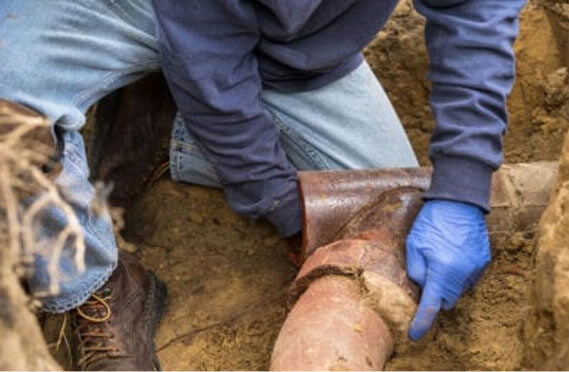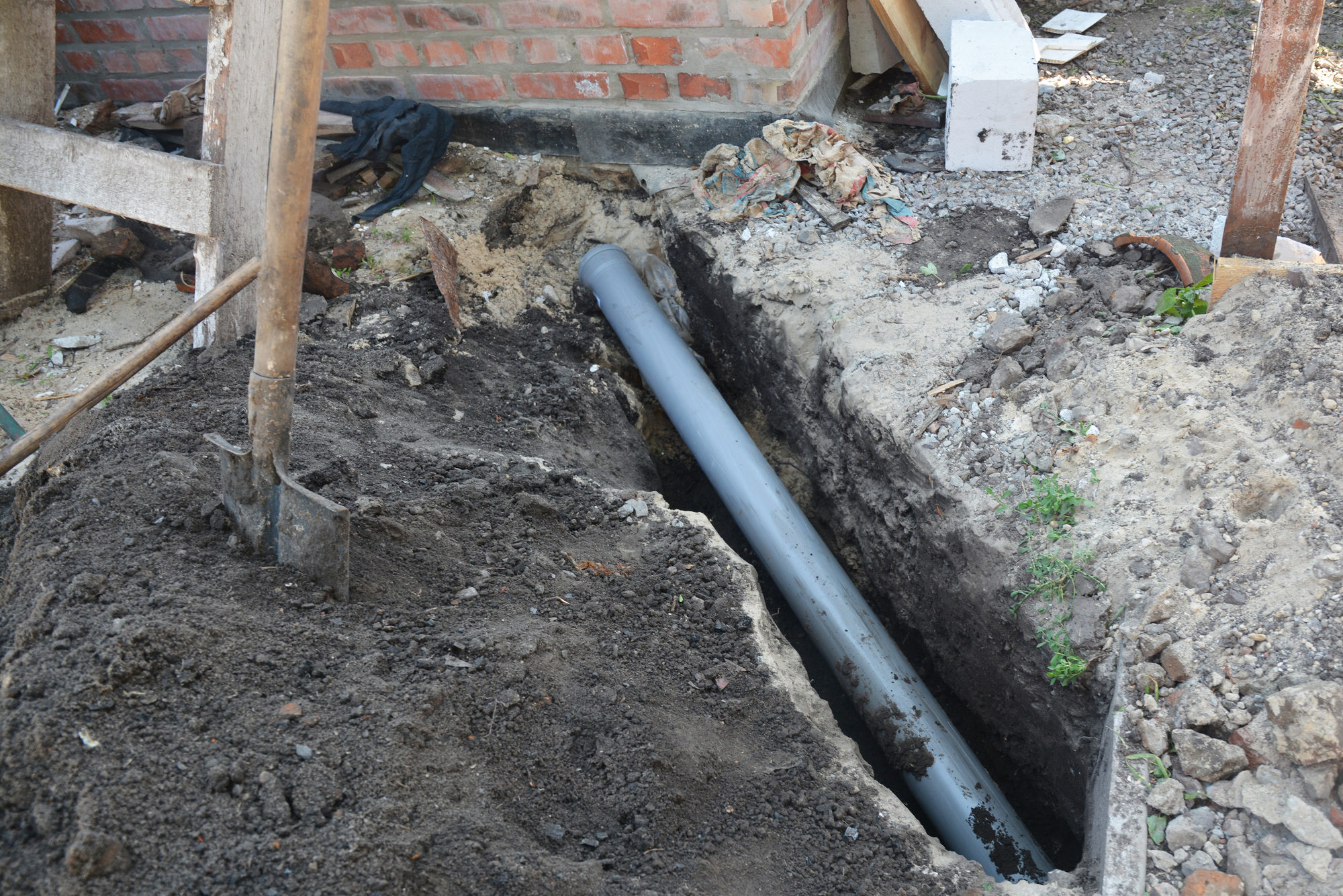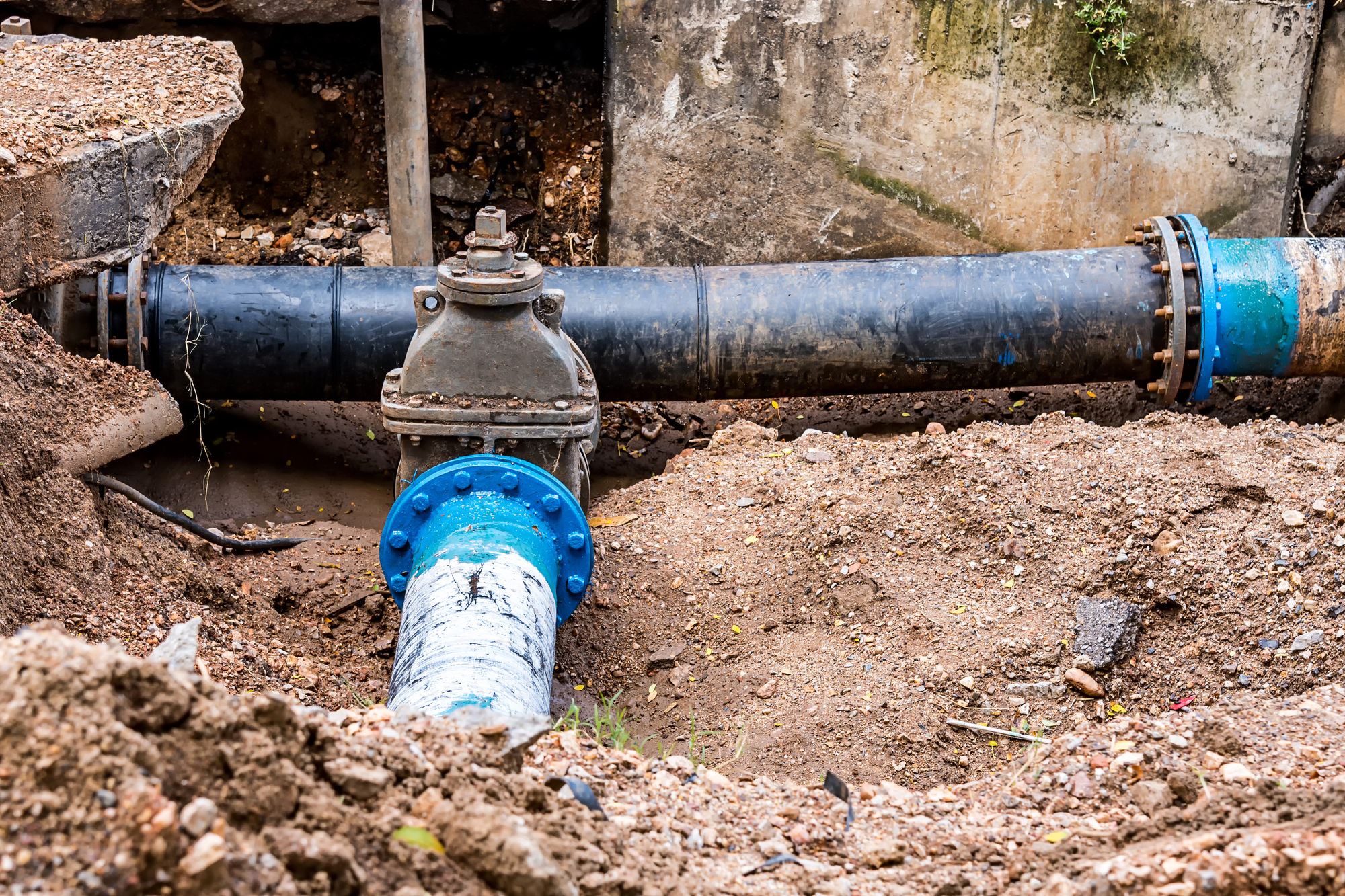Trenchless Sewer Repair
Trenchless sewer repair is a fast, minimally-invasive, cost-effective alternative to the traditional method of fixing damaged sewer pipes. Using trenchless sewer repair methods, we’re now able to repair damaged sewer pipes without the heavy excavation and property damage associated with traditional methods.
Trenchless sewer repair requires only a minimal amount of digging. Just two, 4ft by 4ft pits in order to gain access to the pipe. Compared to traditional methods, it’s quick. Repairs that used to take days, now take only hours, and when our crew is done, you don’t need to spend thousands of dollars to put everything back together again.
There are a variety of trenchless sewer repair methods including…

Trenchless Sewer Pipe Lining
Trenchless sewer pipe lining, also called structural pipe lining, or cured-in-place-pipe lining (CIPP) involves using a special, epoxy-soaked liner to create a new pipe inside your old, damaged one.
Here’s how pipe lining works…
- The first thing we do is perform a CCTV sewer Inspection to see what’s happening inside the pipe. We assess its structural integrity, see what kinds of obstructions are present, if there are any cracks, breaks, etc. This is a non-destructive procedure that takes around 30 minutes to complete. If the pipe still possesses structural integrity and is in relatively good shape despite the damage, it can be lined.
- The next step involves hydro jetting the pipe to thoroughly clear it of debris, sludge, small tree roots, or anything else that might be inside it. If the CCTV sewer inspection showed the presence of large tree roots, those will be broken up via snaking prior to hydro jetting. While hydro jetting is powerful enough to cut through and flush away small tree roots, it can’t get rid of large tree roots. So, we take care of those first via snaking. The goal of hydro jetting is to get rid of everything inside the pipe in preparation for lining. We want the pipe’s current diameter to be as close as possible to its original diameter. We also don’t want to line a dirty pipe.
- The next step is the actual pipe lining process. We dig two, 4ft x 4ft access pits to get at the damaged pipe, and then insert an epoxy-soaked liner into it. Inside the liner is a bladder, and as the bladder is inflated it pushes the liner with the epoxy up against the inside wall of the pipe. After it has been left to cure for a few hours, the bladder is removed and you now have a new pipe inside your old one.
- The next step involves robotically reinstating any branches that were covered over during the pipe lining procedure.
- Finally, we perform another CCTV sewer inspection to make sure everything is OK.

Customers sometimes ask us if pipe lining reduces the pipe’s diameter and if so, will this affect the pipe’s flow capacity. Here’s our answer to that…
Pipe lining does slightly reduce a pipe’s diameter, however it typically increases the flow capacity of your sewer pipes. Flow capacity, rather than just pipe diameter, is the real concern. It is calculated by factors such as diameter of pipe as well as the type of material. Newly lined pipe is slick, much like a waterslide, so the slickness of the liner makes up in flow capacity what you lose in pipe diameter.
For more information see our Pipe Lining service page.
Pipe Bursting
Pipe bursting is another trenchless sewer repair method that is commonly used to replace lateral lines, or the house-to-street sewer line. Pipe bursting is typically more cost effective than CIPP, but has limitations that make it ideal for straight runs of pipe (the HDPE material would have trouble navigating bends in your sewer).
If a sewer pipe has lost its shape or structural integrity and can’t be lined, we can typically pull a brand new HDPE pipe into the old one in order to replace it.

Here’s how pipe bursting works…
- As with pipe lining, we first perform a CCTV sewer inspection to see what’s going on inside the pipe. We want to make sure the pipe isn’t a candidate for pipe lining.
- Next, we dig two 4ft x 4ft pits to access the damaged pipe (one at each end of the pipe, typically in your yard).
- The brand new HDPE pipe is now pulled into the old one, breaking it up, and taking its place.
- After the new pipe is in place we perform one final CCTV inspection. If everything looks good, the two access pits are filled and the repair is complete.
Pipe bursting is an environmentally-friendly, trenchless solution that involves no chemicals. For more information see our Pipe Bursting service page.
Benefits Of Trenchless Sewer Line Repair
The benefits of trenchless sewer repair include…

Time saved.
Trenchless sewer repair is fast. Repairs that used to take days – or even weeks in some cases – with traditional methods, can now be completed in just hours.

Minimally-invasive and cost-effective.
Traditional sewer repair involves digging up floors, knocking down walls, and paying thousands of dollars to repair the damage. Because trenchless sewer repair is minimally-invasive, you don’t have to pay to repair property damage after the work is done. Trenchless sewer repair only requires two small pits in order

Trenchless repair is a solution that lasts.
Trenchless sewer repair is not a temporary fix. The repairs are designed to last up to 50 years for CIPP and 100 years for new
HDPE pipe
(pipe bursting).
What Pipes Can Be Repaired
Using Trenchless Sewer Repair?
Trenchless sewer repair can be used on…
Trenchless Sewer Repair Cost
Trenchless sewer repair typically saves property owners between 30-40% of their entire project cost. While the actual trenchless sewer repair quotes may be anywhere from 30-50% more than dig-up-and-replace methods, it’s still a cost-effective solution because there’s no need to destroy your property in order to get at the damaged pipe. That means you save thousands of dollars on restoration and clean up costs that would be associated with replacing expensive landscaping, retiling, replacing drywall, repainting, etc.
Can Trenchless Sewer Repair Be Used in All Cases?
Trenchless sewer repair techniques are great. They’re both minimally-invasive and cost-effective. The problem is, we can’t always use them.
Sometimes a sewer pipe is so badly damaged that no trenchless repair method is feasible. You can line a collapsed pipe, and in some cases, a pipe is damaged to the point where even pipe bursting isn’t possible. We also can’t use trenchless techniques to repair pipes that are backpitched.
When it’s impossible to use a trenchless repair method, we use conventional sewer replacement methods.
If you’re having trouble with your sewer pipes, contact us or give us a call today at (310) 299-9284.
Our Service Area
New Flow Plumbing provides trenchless sewer repair services to customers within a 20 mile radius of our office at 6718 Katherine Ave Van Nuys, CA 91405 including


